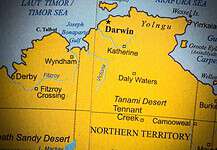BY REUBEN ADAMS
Coal’s decline has been greatly exaggerated, it seems. Emerging in 2016 from some of the most difficult industry conditions in years, prices have stabilised as supply side tightness combined with international demand growth have analysts upgrading their price forecasts once again.
Global thermal and metallurgical coal prices are spiking for the third time in the past 12 months due to supply tightness in the Chinese market, according to Citi analysts.
With ongoing safety inspections and other Government policy interventions, China’s spot domestic thermal coal supply may remain tight in the coming months.
The impacts all along the Australian supply chain have been overwhelmingly positive.
For example, coal exports from northern Queensland surged in August to a multi-year high of 13.44 million tonnes (mt), the highest monthly total since January 2014.
Dalrymple Bay Coal terminal (DBCT) exported 6.95mt in August, which brought DBCT’s annualised exports to 81.81 million tonnes per annum (mtpa); just short of its 85mtpa nameplate capacity.
At 53.56mtpa, the neighbouring Hay Point Coal Terminal (HPCT) came even closer to hitting its 55mtpa nameplate capacity.
Meanwhile, metallurgical coal exports to China and Taiwan from Gladstone Port in Central QLD surged a respective 73 per cent and 191 per cent year-on-year in August.
In a September note, Citi said a combination of “robust demand, supply constraints and restocking” would act to keep export prices higher for longer.
A coal mine accident in the Shanxi Province which killed four prompted the Chinese Government to announce a new round of safety inspections in late August.
The effect of these safety inspections on domestic supply would last through the second half of the year, Citi analysts said.
On the demand side, China’s electricity generation has grown 6.8 per cent year-on-year. Policies to keep power plants well-stocked could create tightness in the physical market and provide an ongoing boost to market sentiment.
And yet the country’s opaque – and seemingly counterintuitive – import policies are cause for concern to Australian producers.
There are unofficial reports that China has restricted coal imports to force local power stations into using more domestic coal, providing a boost to its local industry, according to The Australian Financial Review.
Treasurer Scott Morrison, who had just returned from a bi-lateral Strategic Economic Dialogue (SED) in Beijing, called them “practical issues”, but downplayed any material impacts in an interview with Sky News.
Still, analyst consensus is that coal will shine for a while longer, with Macquarie Bank predicting prices for met coal to remain buoyant into next year.
“The biggest discernible change in fortunes for commodities has been a lifting in investor sentiment towards Chinese demand, with the strong June macroeconomic prints – including the third-highest ever loans data – having presented a more robust picture of activity for the second half of 2017,” Maquarie analysts said in an August research note via Business Insider.
The Producers: Reporting Season
Whitehaven
Whitehaven rode higher volumes and prices to post a massive 20-fold jump in full-year profit to $405.4 million.
Whitehaven said it had received a combined average price of $112 a tonne for its coal over the 12 months; a $37 per tonne increase over the previous year.
Managing director chief executive Paul Flynn said the outlook for high quality coal was positive as more HELE technology coal-fired power plants were deployed into the Asian region.
Yancoal
Yancoal’s net loss after tax for the six months to June 30 narrowed to $13.9m from $180m the previous year, as stronger coal prices delivered the miner an operating profit.
“While initial price improvements were short-lived during the first half of the year, with gains mostly attributable to the impact of the Queensland cyclone event, metallurgical coal prices have subsequently appreciated in recent months in response to strong steel demand from China,” Yancoal chief executive Reinhold Schmidt said.
The recent acquisition of Rio Tinto’s Coal & Allied assets for $US2.69 billion by Yancoal after a protracted bidding war with Glencore was also seen as a vote of confidence in the industry.
Glencore
Glencore recorded a 50 per cent jump in energy products industrial revenue to $US5.037 million in its H17 report, supported by demand growth in the Pacific and Atlantic markets.
“Amid the best global economic growth momentum seen in recent years, our assets reported strong margins, generated by significantly better commodity prices and the favourable cost structures now embedded across the portfolio,” Glencore chief Ivan Glasenberg said.
BHP
“Even including the impact of Cyclone Debbie, coal created EBITDA of $US3.8 billion,” BHP chief financial officer Peter Beaven told analysts during it FY17 earnings call.
“Metallurgical coal prices increased significantly in the first half of the 2017 financial year, due to China’s supply side reform policy and adverse weather conditions in China and Queensland.”
China’s coal supply reform policy was a positive for the sustainability of the industry in the long term, and yet it remained a source of uncertainty, Mr Beaven said.
Over the longer term, it would be emerging markets such as India which would support seaborne demand growth.








































